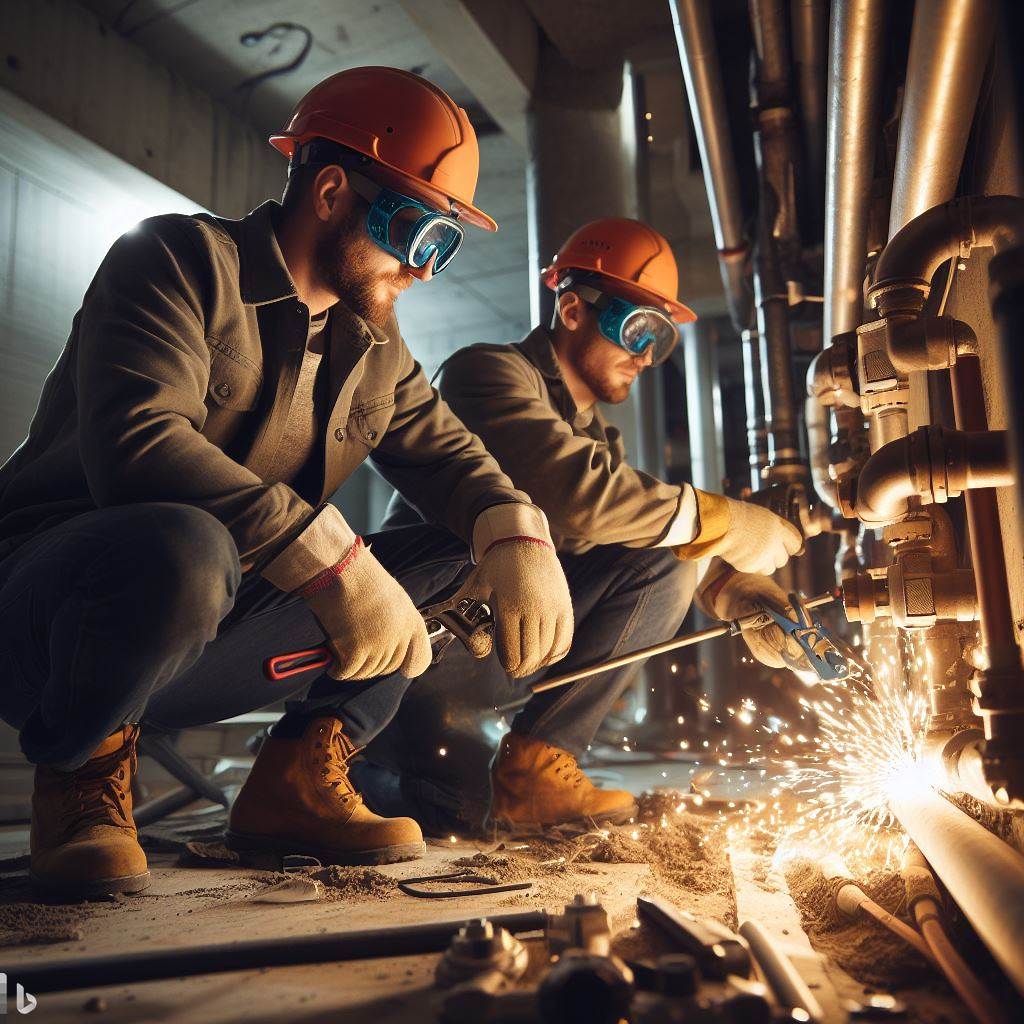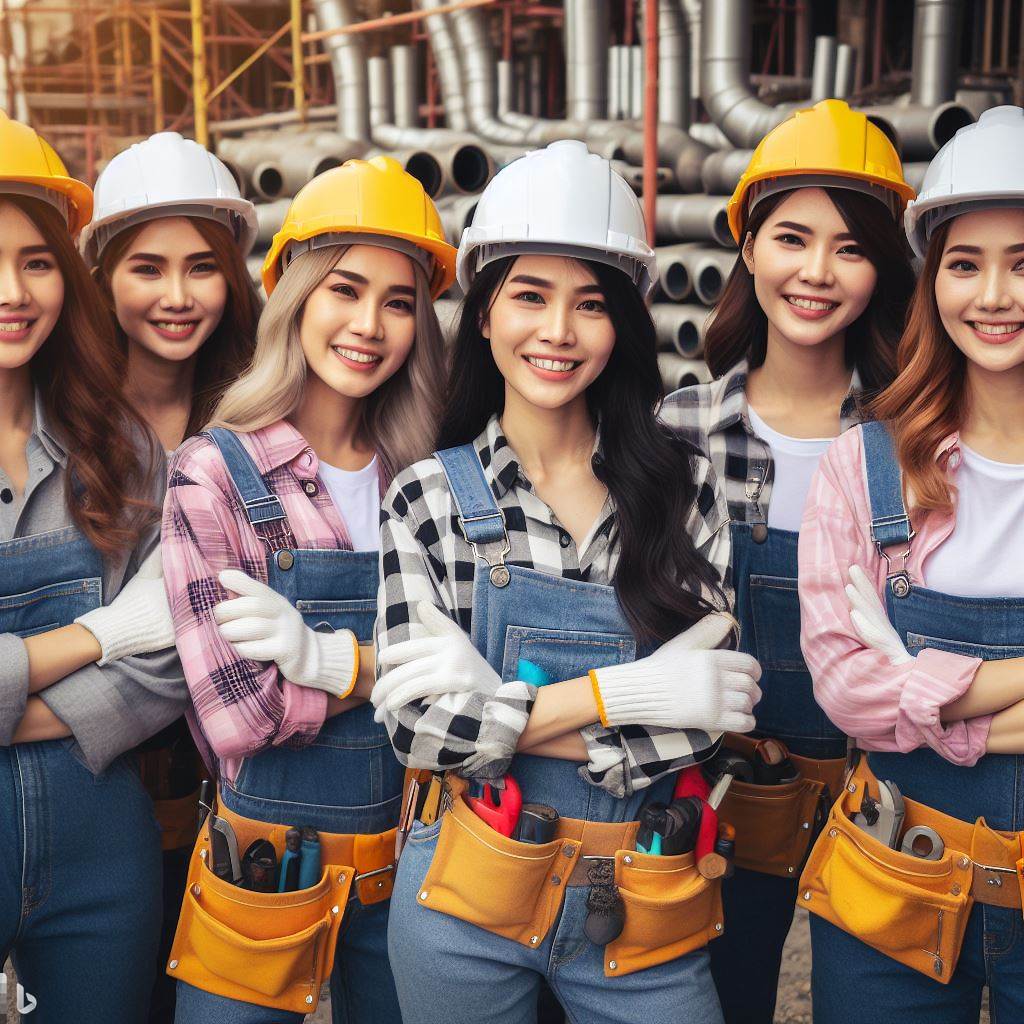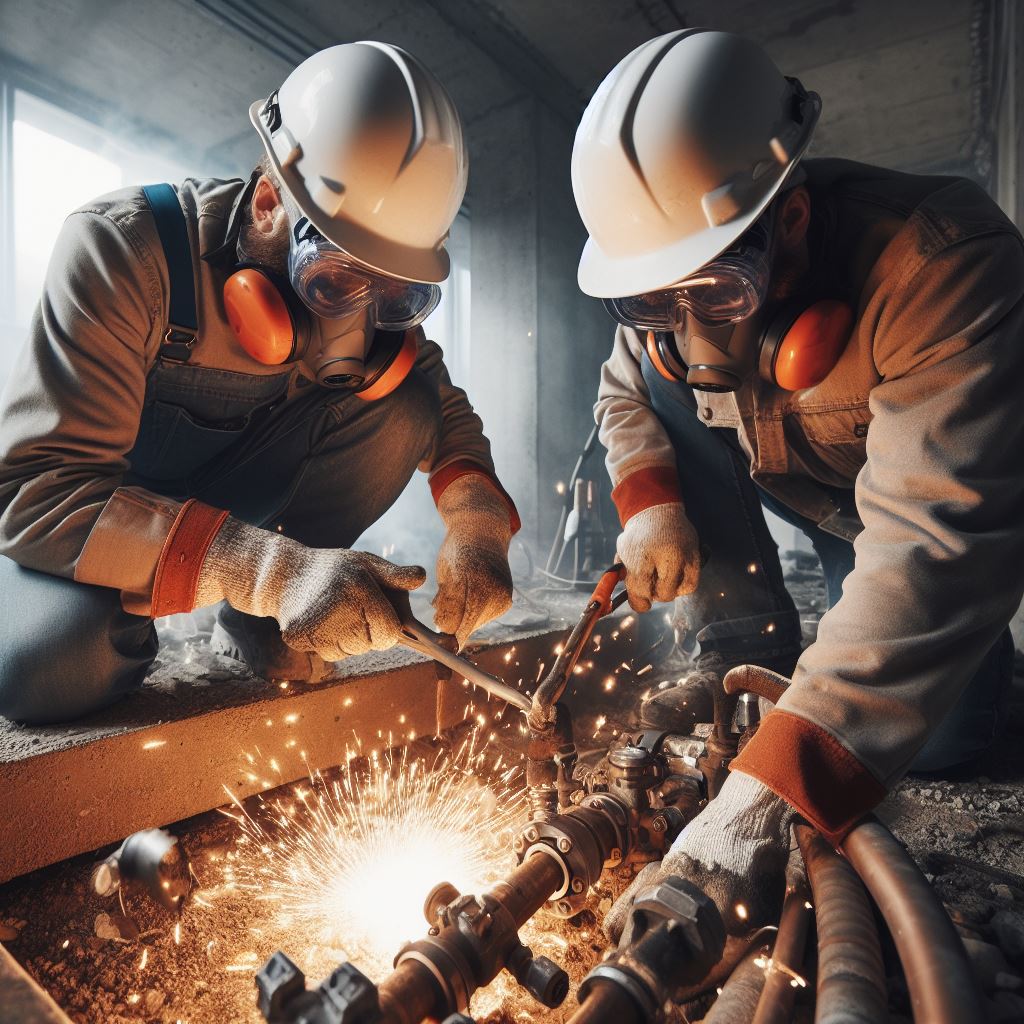Introduction
- Hook: Plumbing plays a vital role in our daily lives, ensuring sanitary living conditions and efficient water supply and drainage.
- Thesis statement: The plumbing industry in the US has been transformed by innovative technologies and practices, giving rise to a plethora of modern trends that are increasingly embraced by consumers.
Hook:
The Importance of Plumbing in Our Daily Lives
In the symphony of our daily routines, plumbing plays a vital role, orchestrating the seamless flow of water and ensuring our homes function effortlessly.
From morning showers to nightly rituals, plumbing quietly supports our way of life.
Thesis Statement:
Plumbing Innovations Have Revolutionized the Industry in the US, Leading to Numerous Modern Trends that are Gaining Popularity
- Smart Technology Integration: Faucets, showers, and toilets equipped with smart sensors enhance efficiency and conserve water.
- Eco-Friendly Fixtures: Sustainable materials and designs reduce environmental impact while maintaining performance standards.
- Advanced Pipe Materials: The advent of durable and corrosion-resistant materials prolongs the lifespan of plumbing systems.
- Water Purification Systems: In-built filtration systems provide clean and safe drinking water directly from the tap.
- Remote Monitoring: Smart devices enable homeowners to monitor and control plumbing systems remotely, preventing potential issues.
As we explore these modern trends, it becomes clear that plumbing is not just a utility; it’s a dynamic industry embracing innovation.
Stay tuned for a detailed journey through the latest plumbing marvels transforming homes across the US.
Historical Background
In this section, we will explore the historical background of plumbing in the United States, including an overview of early plumbing systems and the evolution of plumbing through the years.
Overview of early plumbing systems in the US
- Early American settlers faced challenges in developing plumbing systems.
- Primitive plumbing involved wooden pipes, hollowed logs, or stone channels.
- Indigenous tribes had their own systems, such as clay pipes for sewage disposal.
- Colonial towns established crude networks of wooden pipes to provide basic water supply.
- Benjamin Franklin designed the first public bathhouse and a system to bring water to Philadelphia.
- The Sewerage System of Philadelphia, built in the early 19th century, marked a significant advancement.
- Boston, New York, and other cities followed suit, gradually improving their plumbing infrastructure.
- The industrial revolution in the mid-19th century brought about further advancements in plumbing technology.
- The introduction of cast iron pipes and indoor plumbing became more common.
- The creation of municipal sewer systems helped address sanitation challenges in growing urban areas.
Evolution of plumbing through the years
Over time, plumbing has evolved from basic systems to complex networks, constantly adapting to technological advancements.
- The use of lead pipes for plumbing became common in the 18th and 19th centuries.
- However, due to health concerns, lead pipes were gradually replaced with safer materials.
- In the early 20th century, galvanized steel pipes were popular for plumbing purposes.
- Innovation continued with the introduction of copper pipes, known for their durability and resistance to corrosion.
- The mid-20th century saw the emergence of plastic pipes, providing a more flexible and cost-effective alternative.
- PVC (polyvinyl chloride) pipes gained popularity in the 1970s, revolutionizing plumbing practices.
- Further advancements included the development of PEX (cross-linked polyethylene) pipes, known for their flexibility.
- Plumbing fixtures and appliances also underwent significant improvements over time.
- Modern innovations such as low-flow toilets and water-saving faucets help conserve water resources.
- Smart plumbing systems utilizing sensors and automation have revolutionized water management.
Understanding the historical background of plumbing allows us to appreciate the advancements and innovations that have shaped the systems in use today.
From primitive methods to sophisticated technologies, plumbing has come a long way in providing safe and efficient water supply and sanitation.
Read: The Intricacies of Plumbing Codes Across US States
Smart Plumbing Systems
Definition of smart plumbing systems
Smart plumbing systems refer to advanced technologies integrated into plumbing infrastructure to optimize functionality and efficiency.
Benefits of smart plumbing systems
- Increased water conservation: Smart systems monitor water usage and reduce waste, resulting in lower utility bills and a smaller ecological footprint.
- Enhanced convenience: Automation allows for remote control and monitoring, providing homeowners with greater control and peace of mind.
- Improved safety: Smart plumbing systems can detect leaks, prevent water damage, and shut off water supply automatically, reducing the risk of costly repairs.
- Energy efficiency: Monitoring and regulating water temperature save energy, resulting in reduced energy consumption and lower utility costs.
- Real-time analytics: Smart systems collect data on water usage patterns, allowing for informed decision-making and proactive maintenance.
Examples of smart plumbing technologies
1. Smart toilets
- Sensor-activated flushing: Eliminates the need for physical contact, promoting better hygiene.
- Auto-cleaning features: Includes self-cleaning bidet functions and automated seat sanitization.
- Water-saving options: Adjustable water volume and dual-flush systems reduce water consumption.
2. Leak detection systems
- Water sensors: Placed in strategic areas, these sensors detect leaks and send alerts to homeowners’ smartphones.
- Smart shut-off valves: Automatically shuts off the water supply when a leak is detected, preventing further damage.
3. Automated water shut-off valves
- Remote control: Allows homeowners to remotely shut off water in case of emergencies or when away from home.
- Integrated leak detection: Automatically shuts off water when leaks are detected, preventing extensive damage and costly repairs.
- Conservation mode: Monitors water usage and shuts off when consumption exceeds a predetermined threshold.
Smart plumbing systems are revolutionizing the way we interact with and manage our plumbing infrastructure.
By harnessing the power of automation, these technologies offer numerous benefits for homeowners, such as increased efficiency, convenience, and safety.
Additionally, these systems contribute to water conservation efforts and promote sustainability.
Investing in smart plumbing technologies can have a significant long-term impact on both the environment and household expenses.
With real-time data collection and analytics, homeowners can make informed decisions regarding water usage and identify potential issues before they become major problems.
The emergence of smart plumbing systems marks a new era in plumbing innovation.
Transform Your Career Today
Unlock a personalized career strategy that drives real results. Get tailored advice and a roadmap designed just for you.
Start NowAs technology continues to advance, we can expect further developments and integration of smart features into our everyday lives.
By embracing these modern trends, homeowners can enjoy the benefits of a more efficient, convenient, and sustainable plumbing system.
Read: Environmental Impact: Green Plumbing Trends in the USA
Water Conservation Innovations
Growing Concern for Water Conservation
Water conservation has become an increasingly important issue in the United States.
Introduction of Low-Flow Fixtures
To address this concern, plumbing industry has introduced low-flow fixtures that significantly reduce water usage.
Benefits of Water-Saving Plumbing Innovations
Water-saving plumbing innovations not only help preserve this precious resource but also offer several advantages.
Examples of Water-Conserving Technologies
Here are a few examples of technologies designed to conserve water:
1. Low-Flow Toilets and Showerheads
Low-flow toilets and showerheads are designed to limit water consumption without compromising functionality
2. Greywater Recycling Systems
Greywater recycling systems actively collect and treat water from sinks and showers for reuse in non-potable applications.
In today’s water-scarce world, water conservation is no longer a concept but a crucial necessity.
The plumbing industry takes a lead role, introducing innovative technologies to significantly reduce water usage while maintaining optimal functionality.
A notable advancement is low-flow fixtures, like toilets and showerheads, designed to limit water consumption without compromising performance.
Advanced engineering ensures users enjoy satisfying showers or flushes while using significantly less water, contributing to cost savings for homeowners and businesses.
Reduced water usage lowers utility bills, promoting sustainable practices and environmental responsibility.
Low-flow toilets use less water per flush through technologies like dual-flush options.
Similarly, low-flow showerheads maintain water pressure while limiting flow, offering an efficient and comfortable bathing experience.
Greywater recycling systems treat water from sinks, showers, and laundry for non-potable reuse, contributing to water conservation efforts.
Repurposed greywater is suitable for irrigation, toilet flushing, or cleaning, reducing the demand for fresh water.
Water-saving plumbing innovations address the growing need for conservation, preserving the planet’s most precious resource.
These technologies offer practical benefits, including cost savings and environmental sustainability.
Transform Your Career Today
Unlock a personalized career strategy that drives real results. Get tailored advice and a roadmap designed just for you.
Start NowBy embracing water-saving innovations, individuals and businesses make meaningful contributions to the global effort to conserve water for future generations.
Read: Comparing Union vs. Non-Union Plumber Jobs in the US

Eco-friendly Plumbing Materials
- Shift towards sustainable and environmentally friendly materials
- Introduction of eco-friendly plumbing materials
- Advantages of using eco-friendly materials
- Examples of eco-friendly plumbing materials
- Water-saving faucets and fixtures
- Recycled pipes and fittings
The plumbing industry actively adopts eco-friendly materials as the world prioritizes environmental sustainability.
This momentum is particularly strong in the United States, where plumbers and homeowners recognize the importance of reducing their carbon footprint and conserving resources through eco-friendly plumbing materials.
Modern plumbing trends emphasize the use of materials designed to deliver high-quality performance while minimizing environmental impact.
These materials, often sourced from recycled or sustainable origins, eliminate harmful chemicals that can contaminate water supplies.
Incorporating these eco-friendly materials into plumbing systems enables individuals to contribute to a cleaner, healthier planet.
Beyond environmental benefits, these materials offer advantages such as water conservation.
Water-saving faucets and fixtures, equipped with aerators or flow restrictors, reduce water consumption without compromising performance.
Furthermore, eco-friendly plumbing materials promote energy efficiency, with insulated pipes minimizing heat loss during hot water transportation.
This not only conserves energy but also reduces utility bills for homeowners, fostering a more sustainable and cost-effective plumbing system.
Waste reduction is another positive outcome, as recycled pipes and fittings made from materials like polyethylene or copper divert waste from landfills without compromising durability.
Water-saving fixtures, like dual-flush toilets, offer innovative solutions, allowing users to choose between partial and full flush options for different waste types.
In summary, the plumbing industry’s notable shift towards eco-friendly materials empowers individuals to contribute to water conservation, energy efficiency, and waste reduction.
Water-saving faucets, fixtures, and recycled pipes showcase the market’s innovative options, marking a positive stride towards a greener future in the United States.
Read: Career Pathways: From Apprentice to Master Plumber
Cutting-edge Drain Cleaning Techniques
Importance of maintaining clean drains
Keeping drains clean is crucial for the proper functioning of plumbing systems and to avoid clogs and backups.
Traditional drain cleaning methods
In the past, drain cleaning involved using plungers, drain snakes, and chemicals to remove blockages.
Introduction of advanced drain cleaning techniques
With technological advancements, innovative methods have been developed to enhance drain cleaning processes.
Examples of modern drain cleaning technologies
Here are two cutting-edge drain cleaning techniques that have revolutionized the industry:
Transform Your Career Today
Unlock a personalized career strategy that drives real results. Get tailored advice and a roadmap designed just for you.
Start NowHydro-jetting
Hydro-jetting is a high-pressure water cleaning method that eliminates stubborn clogs and clears debris effectively.
This technique uses specialized equipment to blast water at high pressures, removing build-up and blockages entirely.
Video pipe inspection
Video pipe inspection involves the use of a camera-mounted cable that is inserted into the drain to provide a visual inspection of the pipes’ interior condition.
This technology allows plumbers to identify the cause of clogs or damages accurately, resulting in efficient repairs.
Advantages of cutting-edge drain cleaning techniques
These modern drain cleaning technologies offer several advantages over traditional methods:
- Increased efficiency: Cutting-edge techniques can clear clogs quickly, reducing the time and effort required for maintenance.
- Preventive maintenance: Advanced methods allow for proactive inspections, identifying potential issues before they become major problems.
- Environmentally friendly: Many modern techniques are eco-friendly, minimizing the use of harmful chemicals and reducing the environmental impact.
- Long-lasting results: With thorough cleaning and precise inspections, these techniques provide longer-lasting solutions, minimizing the need for frequent maintenance.
The future of drain cleaning
As technology continues to advance, the field of drain cleaning is expected to witness further innovation and improvements.
Plumbers and manufacturers are constantly striving to develop more efficient and eco-friendly techniques.
In summary, the introduction of cutting-edge drain cleaning techniques has revolutionized the industry.
Hydro-jetting and video pipe inspection have emerged as some of the most effective methods, offering increased efficiency and preventive maintenance.
With these advancements, maintaining clean drains has become easier and more environmentally friendly.
As technology continues to evolve, the future of drain cleaning looks promising, ensuring improved plumbing systems and customer satisfaction.
Emerging Trends in Bathroom Design
Changing preferences in bathroom design
- Shift towards minimalist and spa-like designs in bathrooms
- Introduction of natural materials such as wood, stone, and bamboo in bathroom decor
- Incorporation of eco-friendly elements like water-saving fixtures and LED lighting
- Preference for open and spacious layouts with ample storage solutions
- Integration of plants and greenery to create a calming and refreshing atmosphere
Modern bathroom fixtures and layouts
- Introduction of high-tech shower systems with programmable settings and built-in speakers
- Smart toilets with advanced features like automatic flushing, bidet functions, and temperature control
- Innovative sinks and faucets with touchless technology and motion sensors for improved hygiene
- Freestanding tubs and walk-in showers becoming popular choices for a luxurious bathing experience
- Customizable storage options like floating vanities and built-in shelving for a clutter-free look
Integration of technology in bathrooms
- Smart mirrors with built-in lighting, Bluetooth connectivity, and voice-activated assistants
- Wireless charging stations and built-in speakers for a seamless tech experience in the bathroom
- App-controlled showers and baths that allow users to pre-set water temperature and personalize their experience
- High-tech ventilation systems to improve air quality and eliminate steam and odors
- Waterproof TVs and sound systems for entertainment while enjoying a relaxing bath
Examples of innovative bathroom designs
- The floating bathroom: A minimalist design featuring a floating vanity, wall-mounted toilet, and hidden storage
- The nature-inspired bathroom: Incorporates natural elements like stone sinks, waterfall showers, and living walls
- The high-tech oasis: A smart bathroom with voice-activated features, digital controls, and integrated audio and visuals
- The industrial chic bathroom: Exposed pipes, raw materials, and vintage fixtures create a trendy and edgy look
- The spa retreat bathroom: Luxurious features like a freestanding tub, steam shower, and heated floors for ultimate relaxation
As bathroom design continues to evolve, homeowners are embracing new trends that prioritize functionality, comfort, and innovation.
Whether it’s creating a sanctuary for relaxation or a high-tech oasis, these emerging trends are reshaping the way bathrooms are designed and enjoyed.
With changing preferences, modern fixtures, integration of technology, and innovative designs, the future of bathroom design looks exciting and promising.
Conclusion
Recap of the discussed plumbing innovations and trends
In this section, we explored several plumbing innovations and trends that are revolutionizing the industry.
We discussed the rise of smart plumbing systems, including leak detection systems and smart faucets.
Additionally, we examined the popularity of eco-friendly plumbing solutions such as low-flow toilets and rainwater harvesting systems.
Emphasize the impact of these innovations on the plumbing industry:
These innovations have had a profound impact on the plumbing industry.
Smart plumbing systems have improved efficiency, reduced water waste, and provided homeowners with greater control and convenience.
Transform Your Career Today
Unlock a personalized career strategy that drives real results. Get tailored advice and a roadmap designed just for you.
Start NowEco-friendly solutions have helped in conserving resources and lowering utility bills.
Closing thoughts on the future of plumbing in the US
Looking ahead, we expect continued advancements in plumbing technology.
With the increasing focus on sustainability and eco-consciousness, we anticipate a greater adoption of smart and eco-friendly plumbing solutions.
As consumers become more aware of the benefits and cost savings, these innovations will become standard in every home.
Plumbing will continue to evolve, becoming more efficient, sustainable, and convenient for homeowners.
Overall, plumbing innovations are reshaping the industry, making it more modern and efficient.
The future of plumbing in the US is promising as we move towards a greener and more sustainable approach.
[E-Books for Sale]
The Big Book of 500 High-Paying Jobs in America: Unlock Your Earning Potential
$19.99 • 500 High-Paying Jobs • 330 pages
Explore 500 high-paying jobs in America and learn how to boost your career, earn more, and achieve success!
See All 500 High-Paying Jobs of this E-Book
1001 Professions Without a Degree: High-Paying American Jobs You Can Start Now
$19.99 • 1001 Professions Without a Degree • 174 pages
Discover 1001 high-paying jobs without a degree! Unlock career tips, skills, and success strategies for just $19.99!




